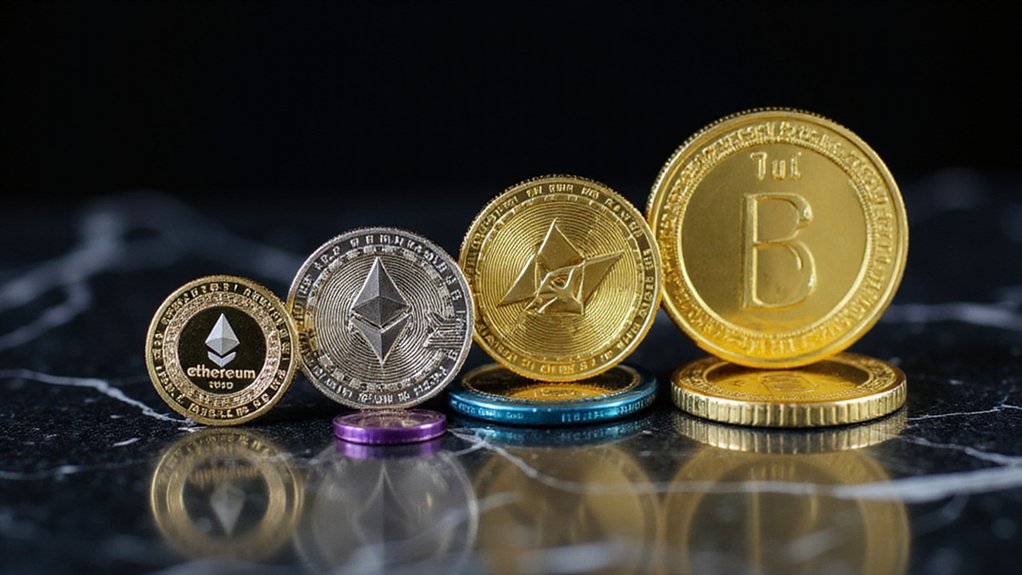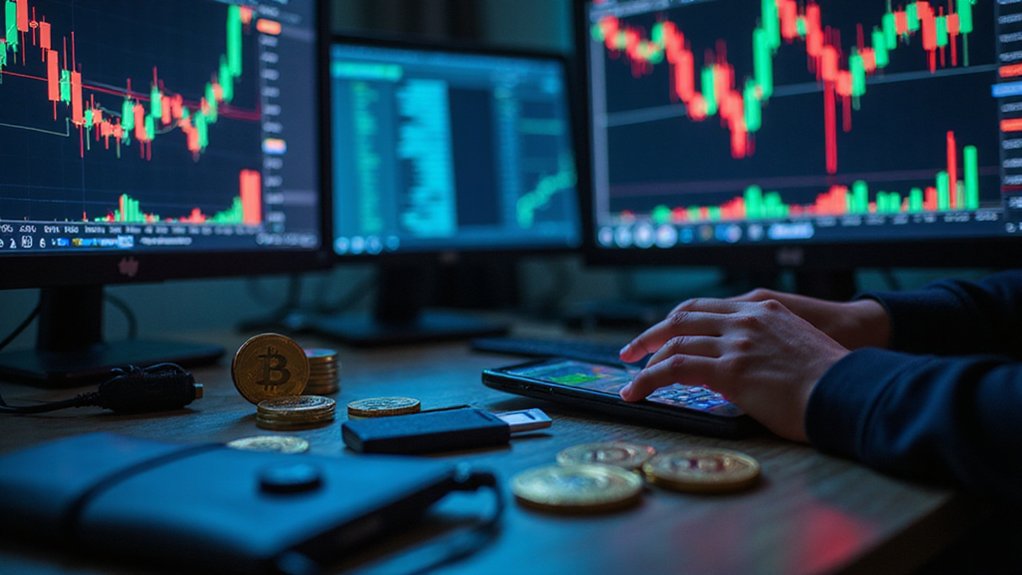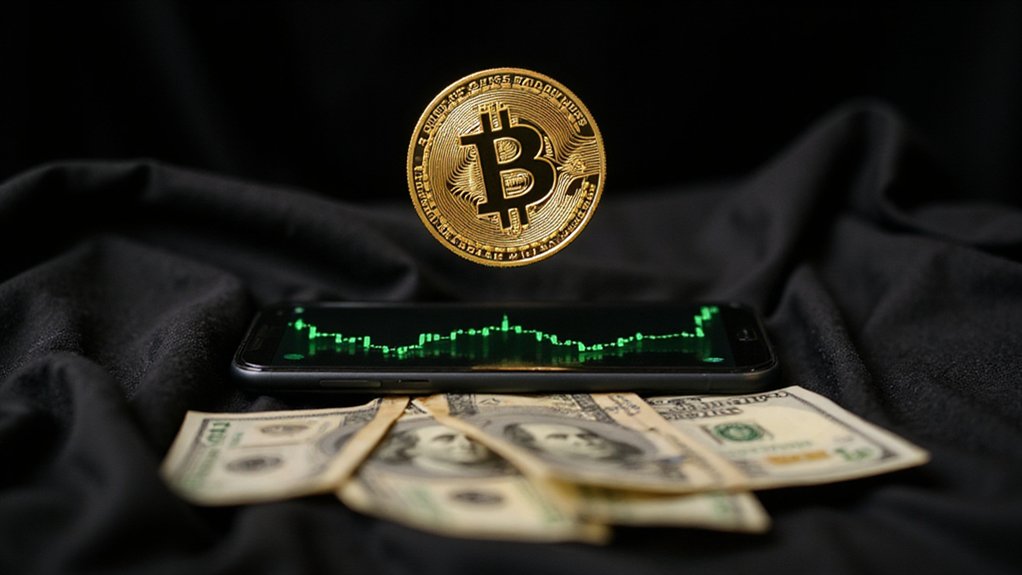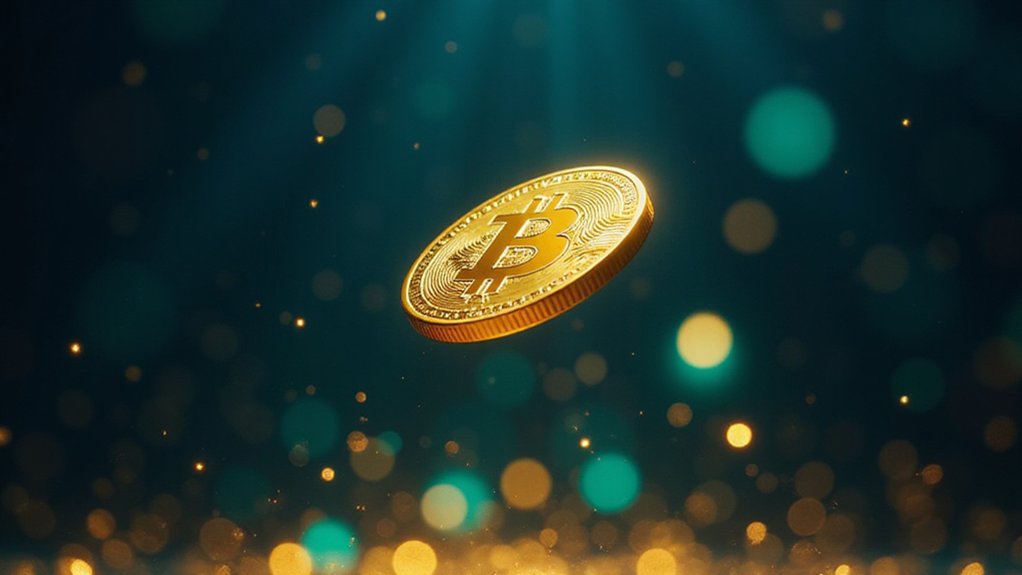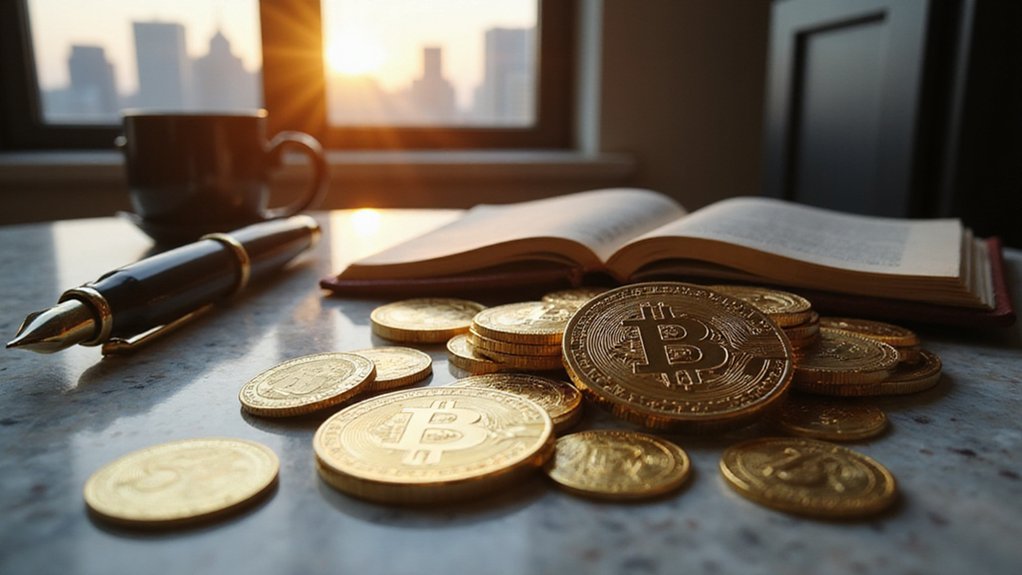The tokenization revolution has arrived with the subtlety of a freight train, transforming how financial markets conceptualize asset ownership by digitizing everything from corporate bonds to real estate deeds on blockchain networks. Four digital assets—ETH, SOL, XRP, and LINK—have emerged as the undisputed sovereigns of this $25 billion market, each wielding distinct advantages that make traditional finance rails appear quaint by comparison.
Ethereum commands the tokenization battlefield through sheer institutional gravity, serving as the primary settlement layer where regulated finance meets blockchain innovation. Its robust smart contract ecosystem enables complex tokenization scenarios while maintaining compliance-friendly architecture—a feat that positions ETH as the backbone for Wall Street’s $135 million investment surge into specialized tokenization platforms.
Ethereum’s institutional dominance transforms traditional finance through compliance-ready smart contracts, attracting Wall Street’s massive tokenization investments.
The network’s Ethereum 2.0 upgrades address scalability concerns, ensuring it can handle the growing demands of tokenized asset trading.
Solana’s technological prowess manifests through its hybrid Proof of History consensus mechanism, delivering up to 65,000 transactions per second at negligible costs. This computational efficiency makes SOL particularly attractive for high-frequency tokenized asset trading, though network outages occasionally remind investors that bleeding-edge technology sometimes bleeds literally.
The platform’s developer-friendly environment has cultivated a thriving ecosystem encompassing DeFi applications, NFTs, and gaming—all critical components of the tokenization infrastructure. Despite facing network stability challenges during peak demand periods, Solana’s hybrid model continues to attract institutional interest with the recent filing of the Franklin Solana ETF.
XRP’s institutional focus centers on cross-border payment facilitation, leveraging its Federated Consensus protocol to serve over 300 financial institutions globally. Despite ongoing SEC litigation creating regulatory uncertainty, XRP’s efficiency in streamlining international transactions positions it as indispensable for tokenized securities.
Latin America’s Mercado Bitcoin exemplifies this utility, planning to tokenize $200 million in assets using the XRP Ledger.
Chainlink operates as the critical bridge between blockchain networks and real-world data, providing oracle services essential for tokenized asset operations. Without reliable price feeds and external data integration, tokenized assets would exist in isolation—making LINK’s infrastructure role irreplaceable. The platform’s open-source development approach enables continuous innovation through community contributions, ensuring oracle services remain adaptable to emerging tokenization requirements.
These four protocols collectively address tokenization’s fundamental requirements: settlement infrastructure, transaction efficiency, institutional adoption, and data connectivity. As major platforms like Robinhood and Kraken launch tokenized stock trading, these digital assets appear positioned to capture the sector’s exponential growth trajectory.
